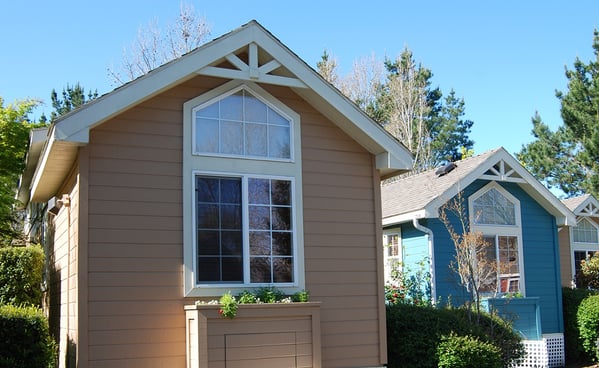If you’re unsure of what “tiny living” really is, you must be living under a rock (and we say that in the kindest way possible!). Tiny living is all the rage these days, from popular HGTV shows where Realtors® help homeowners downsize to tiny homes to shows about building a tiny home yourself to articles about “Granny Pods”, the old saying, “bigger isn’t always better” is really ringing true for many.

Tiny homes are defined as homes under 500 square feet and can cost anywhere from $20,000 to upwards of $40,000 depending on the features packed inside the tiny home. When you look at the math, the average cost per square foot could end up being higher than that of a typical single family home—especially when you consider what you are/aren’t getting with the home. Why pay more per square foot for a tiny home than you would for a home that runs an average of 1,500 square feet or more?
With tiny living usually comes smaller expenses, less dependency on traditional energy sources and so on. These benefits of tiny living are growing increasingly popular, including the fact that the tiny house movement is centered around downsizing and the notion that you should be able to afford the home you live in, and therefore spend money on other things in life you’re interested in.
The questions real estate professionals are asking themselves when it comes to tiny living are things like, “Do these tiny homes (and their inhabitants) benefit the community they reside in?” or, “Is investing in a tiny home a good use of your time and money?”
Investment opportunities in Central Florida in terms of tiny living could look a few different ways, depending on how involved you want to get in this real estate movement.
DOWNLOAD OUR FREE INVESTMENT PROPERTY EBOOK
- Invest money in developing tiny homes to sell. As we mentioned earlier, with building costs for tiny homes at such low prices, many tiny house owners don’t have a mortgage. Millennials are the largest group of potential tiny home buyers, with more than 50 percent of millennials renting because they can’t afford the initial down payment for a house. Tiny housing has turned into an appealing alternative because the costs of home ownership are so low.
- Purchase land marketed to tiny home owners. For one reason or another, many tiny home owners rent land rather than purchase it themselves. Whether it’s to keep their living costs down, or to keep their tiny home in a less permanent place (many tiny homeowners are interested in this movement because they can have a mobile home, making traveling a permanent fixture in their life while still having a place to call “home”), renting land is big in tiny living.
The trend in tiny living isn’t going anywhere, making it an ideal investment for those looking to get in on it now. Let us know if you're interested in seeing some tiny homes in Central Florida!




